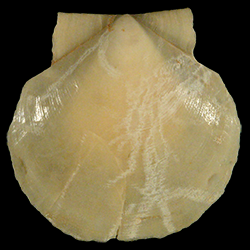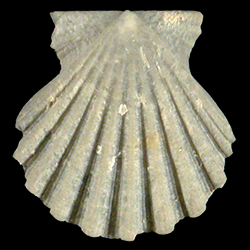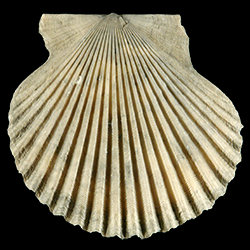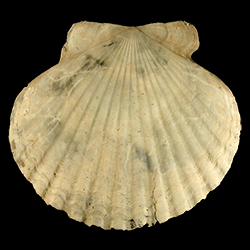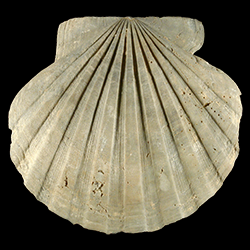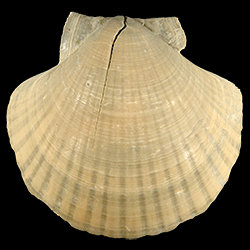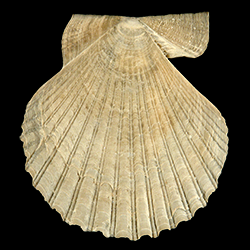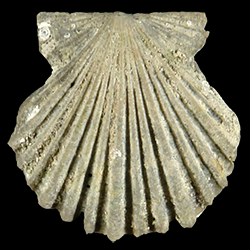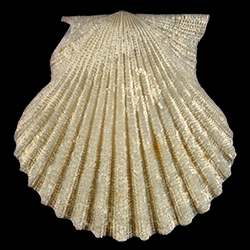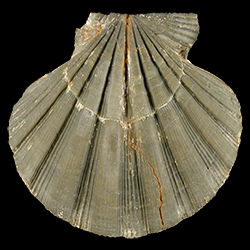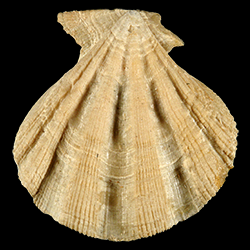
Pectinidae
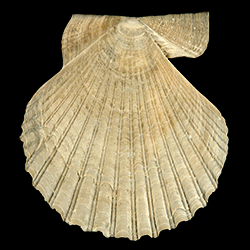
- Phylum: Mollusca
- Class: Bivalvia
- Order: Pectinida
- Family: Pectinidae
Overview
Common name: True scallops
Key morphological features: The Pectinidae range in size up to ~300-500mm. The shells are often thin, equivalve or inequivalve, with inequivalve species most often having a more inflated right valve (which is usually the lower valve in reclining or cemented species). The shells are circular to trigonal in outline with prominent (often asymmetric) auricles on both the anterior and posterior sides of the umbo. A byssal notch on the right valve just ventral of the auricle includes a series of denticles, forming a structure called a ctenolium that is a synapomorphy of the family. The shell is composed of a combination of aragonite and calcite and coloration is often vibrant. Pectinid shells usually exhibit strong radial ribs on the exterior, but ornamentation can also be absent or cancellated, and may also differ between valves of the same individual. Valve interiors have a simple, uninterrupted pallial line and the interior shell margins are often crenulated, reflecting the exterior ribbing. Species of Pectinidae are monomyarian, having only a posterocentrally positioned posterior adductor muscle as adults. Most species have a straight, edentate, hinge plate that features a triangular resilifer. Source: Mikkelsen, P.M., and Bieler, R. 2008. Seashells of Southern Florida: Bivalves. Princeton, New Jersey: Princeton University Press. 503 pp.
Geological range: Triassic to Recent (Mikkelsen & Bieler, 2008).
Geographic distribution: A distributional map for modern Pectinidae may be accessed from OBIS. A distributional map for ancient Pectinidae may be accessed from the Paleobiology Database.
Diversity: There are 263 recognized living species of Pectinidae and 68 genera (WoRMS database, unvetted). The Paleobiology Database recognizes 126 fossil genera and 1791 fossil species of Pectinidae (unvetted).
Paleoecology: The Pectinidae are mostly epibyssate, marine, filter-feeding bivalves. Some species are free living, however, and some epibyssate species are capable of detaching themselves from the substrate to escape danger. Many species are capable of swimming escape responses by forcefully opening and closing their valves. Pectinids also have eyes at the edge of the mantle that may be capable of some level of image formation. The Pectinidae can be found worldwide and inhabit a range of environments from the intertidal zone to the deep sea. Source: Mikkelsen and Bieler (2008).
Phylogenetic status: Monophyletic. The molecular phylogenetic analysis by Puslednik and Serb (2008) supports the monophyly of Family Pectinidae.
